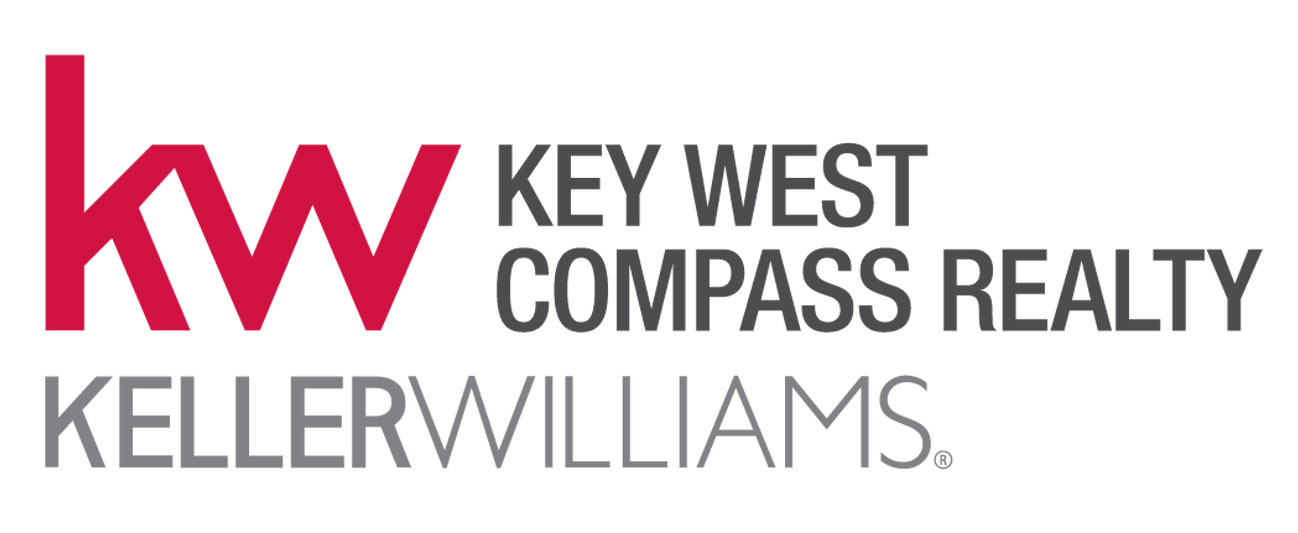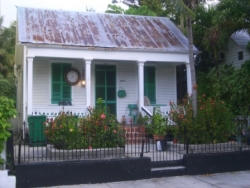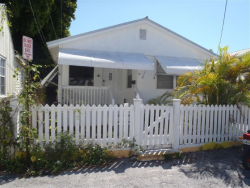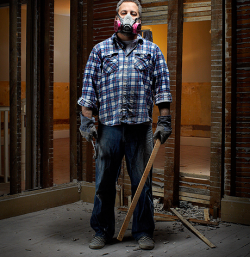I’ve been working with a young couple with a 3 year old and more kids eventually. They want a 3+ bedroom with room to grow. They presently work and live in Old Town Key West and want to stay in the neighborhood. But, most homes in Old Town with 3+ bedrooms are already fixed up ($$$) and smaller homes often need a lot of work ($$$) to become properly livable for a growing family. The couple do not want to spend all their savings fixing up a property. Is there a way they can obtain one mortgage that will allow them to both buy a home with a solid core and fix it up?
Yes - a Construction Rehab Loan 203(k)
The Federal Housing Administration (FHA), which is part of the Department of Housing and Urban Development (HUD), administers (and insurers) various single family mortgage insurance programs. The Section 203(k) program is the Department's primary program for the rehabilitation and repair of single family properties.
Most mortgage financing plans will not usually close the loan and release the mortgage unless the condition and value of the property provide adequate loan security. When rehabilitation is involved, this means that a lender typically requires the improvements to be finished before a long-term mortgage is made.
When a homebuyer wants to purchase a house in need of repair or modernization, the homebuyer usually has to:
- Obtain interim financing first to purchase the dwelling (Acquisition)
- Obtain additional interim financing to do the rehab (Construction); and
- Obtain a permanent mortgage when the work is completed to pay off the interim loans with a permanent mortgage.
Often the interim financing (the acquisition and construction loans) involves relatively high interest rates and short amortization periods. The Section 203(k) program was designed to address this situation. The borrower can obtain one mortgage loan, at a long-term fixed (or adjustable) rate, to finance both the acquisition and rehab. To provide funds for the rehabilitation, the mortgage amount is based on the projected value of the property with the work completed. To minimize the risk to the mortgage lender, the mortgage loan (the maximum allowable amount) is eligible for endorsement by HUD as soon as the mortgage proceeds are disbursed and a rehabilitation escrow account is established. At this point the lender has a fully-insured mortgage loan.
What type of properties are eligible?
To be eligible, the property must be
- A 1 - 4 family dwelling, properly zoned, that has been completed for at least one year.
- Homes that have been demolished, or will be razed as part of the rehabilitation work, are eligible provided some of the existing foundation system remains in place.
- Based on zoning for the final configuration, this program can be used to convert a single family dwelling to a 2, 3 or 4 family dwelling or conversely, a multi-unit dwelling could be decreased to a 1 - 4 family unit.
FHA will not allow you to get the zoning changed.
What about mixed-use?
A "mixed use" residential property is eligible provided:
- The property has no greater than 25 percent (for a one story building);
- 33 percent (for a three story building); or
- 49 percent (for a two story building) of its floor area used for commercial (storefront) purposes; and
- The commercial use will not affect the health and safety of the occupants of the residential property; and
- The rehab funds will only be used for the residential functions of the dwelling and areas used to access the residential part of the property.
Individual condominiums, condo projects and townhouses can also be eligible, restrictions applying. Click here to review.
Are there any restrictions to the rehab or improvements?
Luxury items and improvements are not eligible; however, the homeowner can use the program to finance painting, room additions, decks, aesthetic upgrades, appliances and other items even if the home does not need any other improvements. All health, safety and energy conservation items and building codes must be addressed prior to completing general home improvements.
Carolyn Frey, Senior VP and co-owner of Mortgage Lending Solutions, is my go-to person for tailored mortgage products. Frey says "The 203k is an under utilized loan product that allows people to buy "fixer-uppers" with great bones that conventional loans would not cover, often leaving such properties to Cash Only buyers."
Recent 1st time buyers of hers used a 203k to buy a fixer-upper in their dream neighborhood. Some of the improvements were a new roof, repairs of siding, a new kitchen including new cabinets, marble countertops and appliances, both bathrooms were updated plus new flooring and new paint throughout. "They are now living comfortably in their newly remodeled home, and enjoying one low monthly payment versus juggling separate home improvement loans or credit card debt" says Frey.
How much can I borrow and what are some prime considerations?
The mortgage amount cannot exceed the applicable loan-to-value ratio and maximum dollar amount limitations prescribed for similar properties; namely, whichever is less of:
- The as-is value or the purchase price of the property before rehabilitation, whichever is less, plus the estimated cost of rehabilitation or
- 110 percent of the after-improved value of the property.
There are a host of fees that can be included in the rehab portion of th mortgage amount; among them are materials, labor, contingency reserve, overhead and construction profit, up to six months of mortgage payments (Mortgage Payment Reserve if the unit is not inhabitable during rehab), plus expenses such as permits, fees, inspection fees by a qualified home inspector, licenses and consultant and/or architectural/engineering fees.
Cost estimates must include labor and materials sufficient to complete the work by a contractor. This is so if the Do-It-Yourself homeowner can't complete the job there are funds available to bring a contractor in to complete. (In truth, most 203k rehab projects are required to be completed by a licensed contractor).
A borrower can prepare the architectural paperwork themselves or hire a consultant or contractor. A consultant is recommended and their fee can be part of the mortgage.
At closing, the proceeds designated for the rehabilitation or improvement, including the contingency reserve, are to be placed in an insured, interest bearing Rehab Escrow Account. Rehab begins and over the next 6 months, funds are released after the work is inspected by a HUD-approved inspector. A maximum of four draws plus a final inspection are allowed. If rehab exceeds $10,000 additional draws may be approved.








